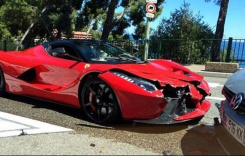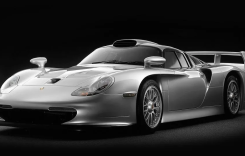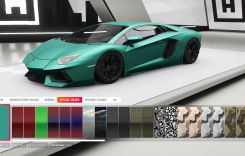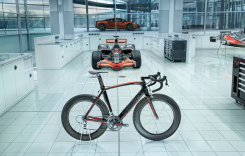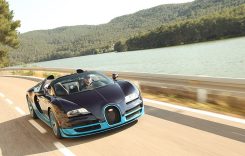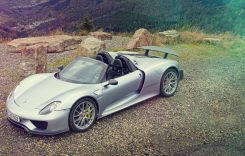KTM has ramped up its street offerings in the past few years and its on-road models now account for nearly 50% of the total units and revenue. June of 2014 proved the best month in KTM’s history and nearly 70,500 motorcycles have been sold in the last six months, 30,000 of them manufactured in India by Bajaj – a minority stakeholder in KTM. Those models include smaller displacement bikes such as the 125 Duke, RC125, 200 Duke, RC200 and 390 Duke. For 2015 the 390 Duke will be available in the United States along with the sportiest of the single-cylinder Bajaj-built bikes, the 2015 KTM RC390.
Last year KTM debuted the KTM RC390 Cup racer at the German Grand Prix at Sachsenring. Immediately, it was speculated there would be a street model to follow, but the big question was if it would see duty on American streets.
few months later KTM announced that there would in fact be an RC390, but at that time there was still no word of whether or not US riders would be able to get their hands on one. With the success of Honda’s CBR250R (now the CBR300R) and Kawasaki’s Ninja 300, the market is there for the RC390 to step into the fray. And MotoUSA was excited to receive an invite to KTM’s 2015 international press launch for the bike, as it meant the RC390 would almost certainly be added to the KTM U.S. lineup.
Both the Duke 390 and RC390 will be hitting dealership floors in December, but pricing is yet to be announced. As expected the RC will cost more than its 300cc Japanese rivals, and KTM sources can only hint at a mid-$6000 price range. But there is a solid case to be made for the RC390 being worth the extra chunk of change. For one, just look at it. The styling makes the rest of the field look dated with its sharp angles and orange trellis frame and wheels. Standard ABS, Brembo-engineered brakes and a WP upside-down fork enhance the technical specifications and make the price disparity seem less of an issue.

Powering the RC390 is a 375cc Single with a claimed output of 44 horsepower at 9500 rpm. A four-valve head features dual overhead camshafts actuating aluminum finger followers. An 89mm forged piston moves through a stroke of 60mm in a Nikasil-coated cylinder. The entire powerplant tips the scales at just 79 pounds, helping the RC390 achieve the best power-to-weight ratio in the class. At 324 pounds overall, the RC390 is at the very limit of Europe’s A2 license power-to-weight ratio and just short of maximum horsepower limits. While A2 requirements don’t mean a thing here in the U.S., American riders do reap the benefits of KTM pushing the limits in the category.
The RC390’s trellis frame is similar to that of the 390 Duke, but it has a different subframe and an 1.5-degree steeper steering-head angle at 66.5 degrees. The trail (88mm) and wheelbase (1340mm) of the RC390 are shorter than Duke’s as well. All this gives the RC390 more ground clearance for higher lean angles along with quicker handling in the curves.
The 43mm WP upside-down fork upfront is the same size as those found on KTM’s RC8 Superbike, although it is not adjustable. In the rear, the linkage-less trellis swingarm is damped by a WP monoshock that features only preload adjustability. Weight distribution front-to-rear with a 165 pound rider is 49/51%.

Everyday Riding
Sitting on the RC390 reveals a much larger cockpit than expected, with plenty of room for riders up to six feet. Shorter riders may find the 32.2-inch seat height a bit of a stretch, but the seat is thin enough to make it feel lower than it really is. We spent the first half of the day riding through the Italian countryside just outside of Modena and Maranello – the home of supercar manufacturers Ferrari, Lamborghini and Maserati and just down the road from Ducati’s hometown of Bologna. The riding position is aggressive enough for shredding though the corners, but not so much that your knees and wrists beg for mercy after a short time. The seat is firm and will be the source of the first complaint on a longer ride.
(Above) Though the tach is small the dash is nicely laid out on the RC390. (Below) ByBre brakes on the front were soft on the initial bite but once you get deeper into the front lever the power comes on more than enough for most situations.
Out on the open roads, the RC390’s Single has torque that pulls much harder than would be expected from a small mill with a short stroke. As the revs rise the power just gets better as you approach the 10,000 rpm rev limit. Keep the motor spinning and you’ll get some serious hustle, but if you let it drop it’s not the end of the world as the 390 will still pull from around 3000 rpm without protest.
Clutch pull is not overly light and has a very connected feel through the cable actuated lever. Shifting is precise with a solid click on upshifts, but has less feedback when downshifting. It’s almost too smooth. Gear spacing is spread out perfectly for the power output of the RC390 and allows for a claimed top speed in the area of 110 mph. The highest achieved during our short blast on the open highway was 103 mph.
Braking power from the ByBre (By Brembo) front caliper and 300mm disc feels somewhat soft on initial bite, which is a plus for beginner riders. Once you get deeper into the front lever, the braking power comes on with more than enough for most situations. The ABS doesn’t intrude until you really spike the lever, or the pavement grip is very poor. Switching off the ABS is possible with just a press and hold of a button on the nicely laid out (except for the smallish tachometer) dash. The rear brake is also a ByBre unit and modulates nicely with plenty of power. Much better than many motorcycles double or triple in price.
Suspension action is plush and follows the road without fuss, gobbling up nasty bits of road without any harshness. The rear end did feel slightly softer than the front, but to be honest my 225-pound frame is well beyond the target customer’s body type. Even so, in the bends the RC390 was very stable with a lightness that allowed for mid-corner adjustments at a whim. The entire package is supremely flickable and just begs to be pointed at curvy mountain roads.

Play and Race Days
Small bore bikes on the race track are becoming more and more common with several series offering classes for the Ninja 300 and CBR300R, and of course there is the ADAC Junior Cup in Europe which is a gateway for young riders to Moto3 racing. It’s easy to see the value in smaller bikes on the racetrack and the RC390 may be the best value yet. We expected the RC would be a fun track mount and weren’t disappointed, wearing smiles long after Autodromo di Modena had locked up for the night.
On the track the RC390’s soft and compliant street suspension held up to the task of aggressive riding. The front fork settled nicely into the corner, although it was often near the bottom of its stroke when dropped in on the brakes. The rear had just too much sag for my size and the ground clearance went away quickly in the first session. After adding three clicks of preload to the shock via the stepped ramp adjuster, I was able to get more lean angle out of the little RC and its handling sharpened up slightly. Even with my girth and the extra preload the rear never got springy or wallowed. I was able to drag the footpgegs in every corner, but this really isn’t a negative or criticism. For me it showed where the limit of lean was, and I was impressed by that limit.

Dropping into Modena’s numerous decreasing radius corners highlight how well the RC390 handles. Tightening up a corner is one of the most difficult things you can ask from a sportbike and the RC does it without so much as a hiccup. In the higher speed corners the 390 is composed, stable and just plain easy. Even when I asked too much of the Metzeler Sporttec M5 rear tire, the resulting slide and recovery was not a moment of terror but rather one of entertainment.
The potent Single allows you to torque out of tighter corners and there was no frantic reaching for the shift lever while still leaned over. A solid midrange pull is followed up by a very respectable top-end rush that saw the RC390 clicking off 98 mph at the end on the short front straight.
Getting on the brakes at the end of that straight finds the RC390s units are “by Brembro” and not actual Brembos. While there is plenty of power available for most instances, there is a point when the front brake will not give you anymore slowing and feels wooden, but this is only when you really try to drive in deep. For 90% of the users on the street and track the brakes will be up to 99% of what is asked of them.
KTM has a winner on its hands with the 2015 RC390. While it will be more expensive than the competition, its racy looks and excellent performance on both the street and track make it worth the extra initial layout. It validates what I’ve felt for some time, small sportbikes are serious business and serious fun.

